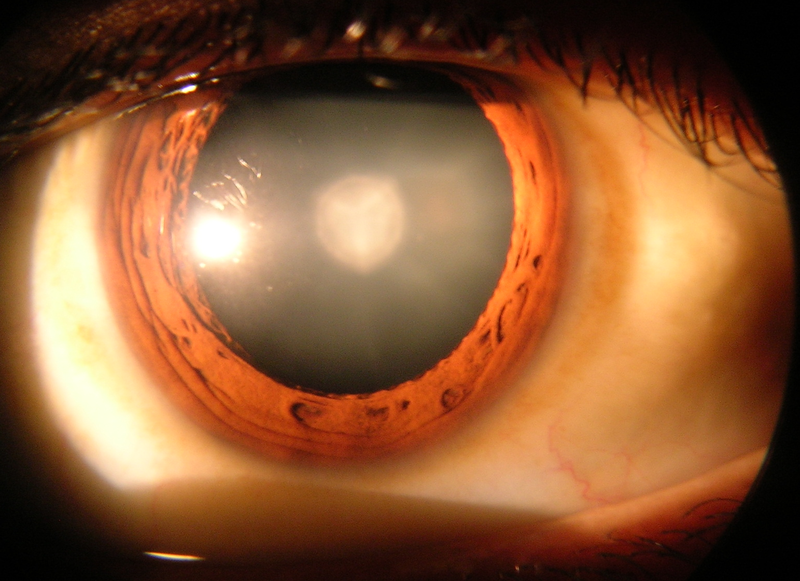One of the world's most commonly performed surgical procedures - cataract surgery - could soon be revolutionised with a laser. Stanford University scientist Daniel Palanker and his colleagues, writing in Science Translational Medicine, have developed a laser mapping and cutting technique to significantly improve the safety and success of lens replacement surgery, which up to one third of the developed world's population undergo  in their lifetimes.
in their lifetimes.
Cataracts occur when the lens, which sits at the front of the eye behind the cornea, becomes cloudy; this hinders the passage of light into the eye, impairing visual acuity, colour perception and making it especially difficult to see in low light conditions. Ophthalmic surgeons remedy the situation by first making an incision in the front part of the eye. They then painstakingly perform a technique called a capsulorhexis, which involves opening up a circular aperture in the capsular membrane that holds the damaged lens. This incision must be circular to avoid producing any "edges" that would be weak spots prone to rupture. When this is complete the lens is broken up, usually by ultrasound, and removed through the aperture. A replacement prosthetic lens is then inserted in its place. Although the the operation has an very high success rate, there are complications.
The trickiest step is performing the capsulorhexis, which relies entirely on the skill of the surgeon and his or her estimation of the "correct" placement of the incisions during the procedure. To remove this uncertainty, the Stanford team have designed a femtosecond laser-assisted technique that initially maps out the eye, performs the capsulorhexis procedure and also cuts up the lens into tiny fragments facilitating its removal. Using pig's eyes to hone the technique and then rabbits to test its safety, the new approach produced capsulorhexis results that were twice as strong as those performed free-hand by a surgeon, thus potentially reducing the risk of complications. The system was then tested on 50 patients - though not as a blind trial (!) - 30 of them in a cross-over study whereby one eye was treated via the traditional surgical technique, the other using the laser.
There were no negative outcomes, confirming the safety and effectiveness of the approach, the cuts made by laser were 50 times more precise than those made by hand and, although stastically not significant, the laser-treated individuals also had slightly better visual acuity afterwards.










Comments
Add a comment